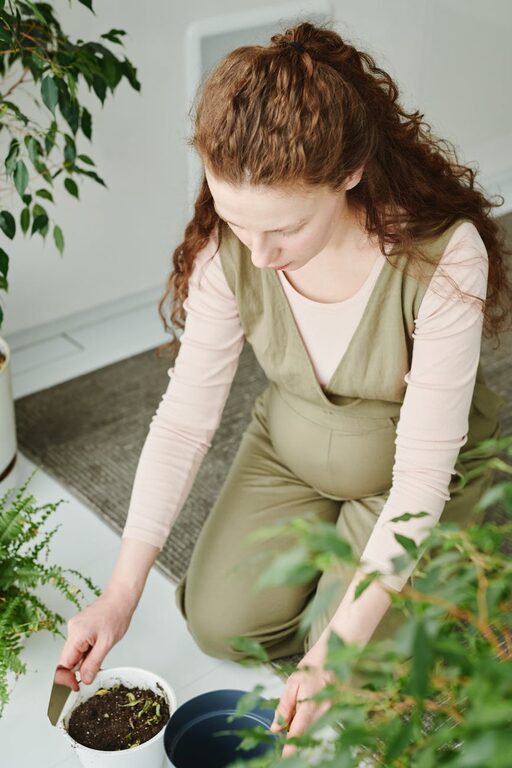
Tips for Keeping Your Houseplants Healthy and Thriving
Bringing houseplants into your home is a wonderful way to add life and freshness to your living space. However, keeping them healthy and thriving requires some basic care and attention. Whether you’re a seasoned plant parent or just starting out, these tips will help you provide the best environment for your indoor greenery.
Understanding Your Houseplant’s Needs
Different plants thrive under different conditions. Knowing the specific needs of your plant species is the first step in keeping it healthy.
Light Requirements
– Low Light Plants: Snake plants, pothos, and ZZ plants tolerate lower light conditions and are perfect for dim corners.
– Medium Light Plants: Peace lilies and philodendrons prefer indirect but bright light.
– High Light Plants: Succulents and cacti need plenty of direct sunlight.
Make sure to place your plants where they receive the appropriate amount of natural light, adjusting their location as the seasons change.
Watering Wisely
Watering is one of the most common challenges for houseplant enthusiasts.
– Check the Soil: Before watering, feel the top inch of soil; if it’s dry, your plant likely needs water.
– Avoid Overwatering: Too much water can cause root rot. Ensure pots have drainage holes.
– Water Evenly: Pour water until it drains out of the bottom, then discard excess.
Each type of plant has its own watering schedule, so be sure to research your plant’s preferences.
Maintaining Ideal Humidity and Temperature
Most houseplants enjoy humid environments similar to their native habitats.
Humidity
– Use a Humidifier: This adds moisture to dry indoor air, especially in winter.
– Mist Plants: Lightly spray leaves with water to boost humidity.
– Group Plants Together: This creates a microenvironment with higher humidity levels.
Temperature
Avoid placing plants near:
– Drafts from windows or doors
– Heating and cooling vents
– Sudden temperature changes
Maintain a consistent temperature, ideally between 65°F-75°F (18°C-24°C), depending on your plant’s needs.
Feeding Your Plants
Plants need nutrients to grow well.
Fertilizing Tips
– Use a balanced, water-soluble fertilizer during the growing season (spring and summer).
– Follow instructions carefully to prevent over-fertilizing.
– Reduce feeding in fall and winter when many plants go dormant.
Organic options like compost teas or worm castings can also be gentle and effective.
Pruning and Cleaning
Keeping your plants tidy promotes growth and reduces pest problems.
Pruning
– Remove yellowing or dead leaves regularly.
– Pinch back leggy stems to encourage bushier growth.
– Use sharp, clean scissors to prevent infections.
Cleaning Leaves
Dust can block sunlight and reduce photosynthesis.
– Wipe leaves gently with a damp cloth.
– For fuzzy leaves, use a soft brush.
– Avoid chemical leaf shines; they can damage the plant.
Dealing with Pests
Even healthy plants can attract unwanted visitors.
Common Indoor Plant Pests
– Aphids
– Spider mites
– Mealybugs
– Fungus gnats
Pest Control Tips
– Inspect plants regularly for signs of infestation.
– Isolate affected plants immediately.
– Use insecticidal soap or neem oil as natural treatments.
– Maintain good airflow to prevent fungal problems.
Repotting Your Plants
Over time, plants can outgrow their pots or exhaust soil nutrients.
When to Repot
– Roots grow through drainage holes.
– Soil dries out quickly after watering.
– Plant becomes top-heavy or root-bound.
Repotting Steps
– Choose a pot one size larger with drainage holes.
– Use fresh, appropriate potting mix for your plant.
– Carefully remove the plant from its old pot, loosen roots, and place it in the new pot.
– Water thoroughly after repotting.
Tips for Successful Houseplant Care
– Keep a plant care journal to track watering, feeding, and growth.
– Rotate plants occasionally to ensure even light exposure.
– Avoid sudden changes in environment.
– Be patient; plants take time to adjust and grow.
Conclusion
Keeping houseplants healthy and thriving isn’t complicated if you understand their basic needs and pay a little attention to their environment. With the right light, water, nutrients, and care, your indoor plants will continue to brighten your home and improve your well-being for years to come.
Happy gardening!
